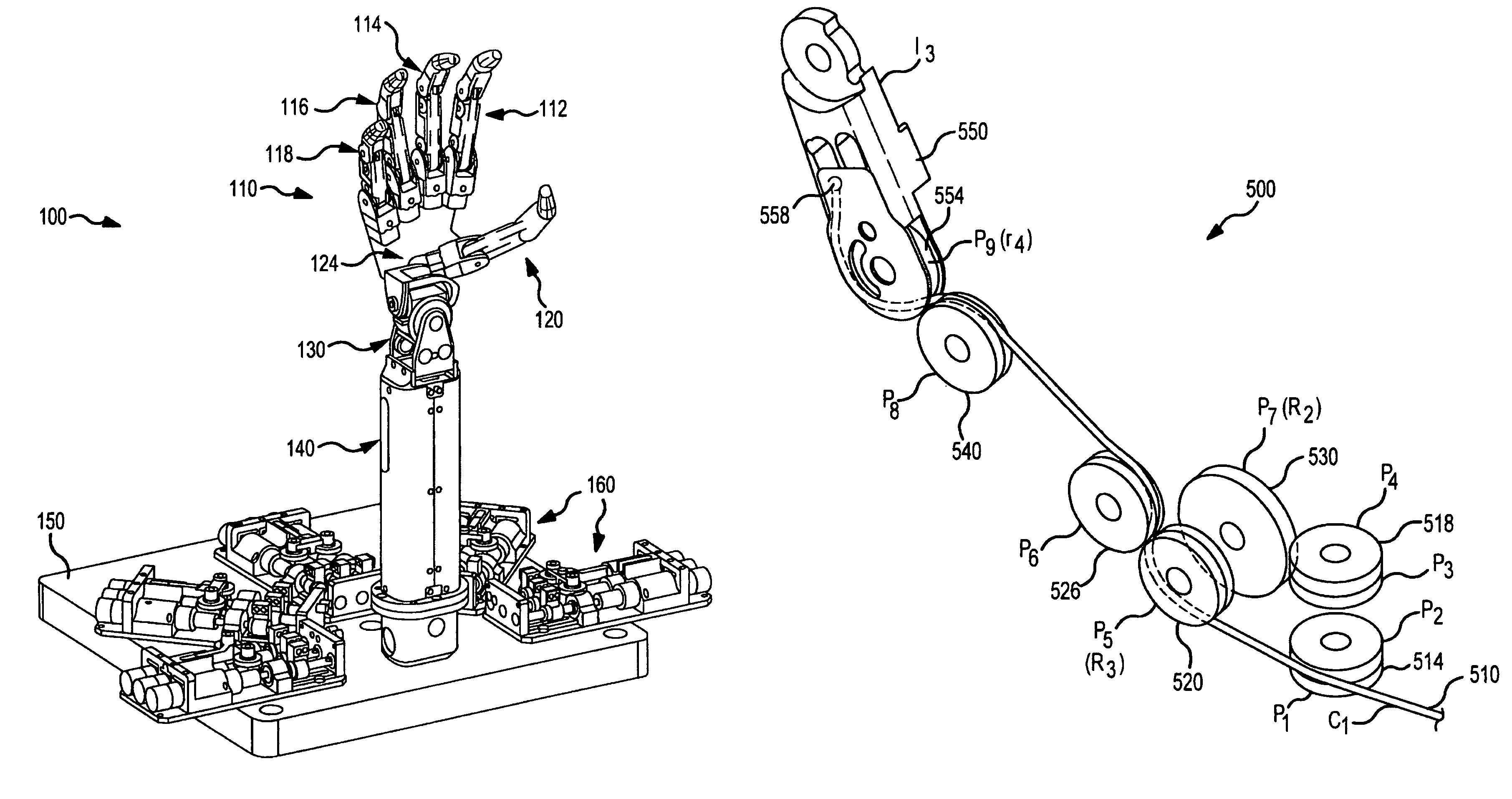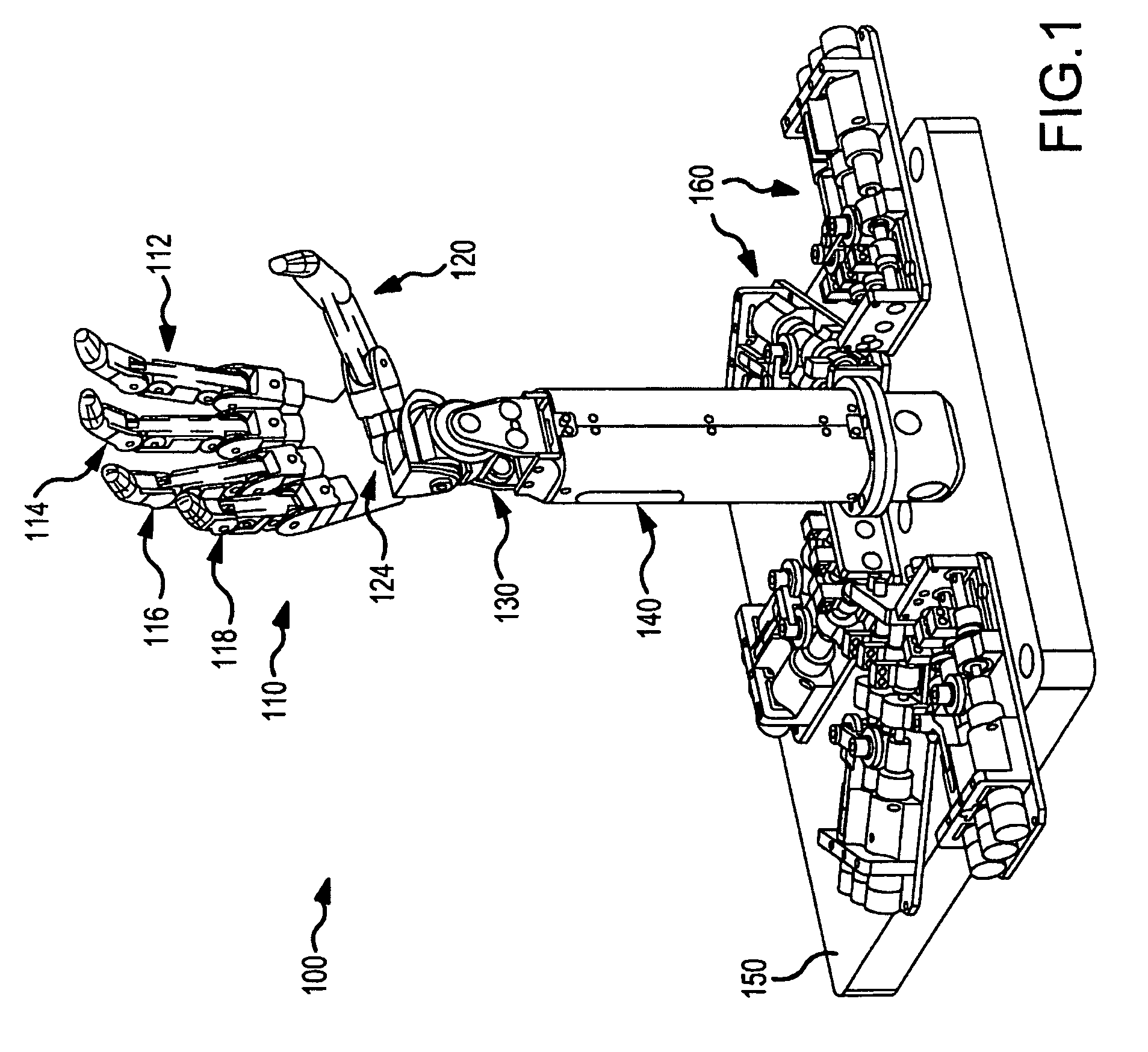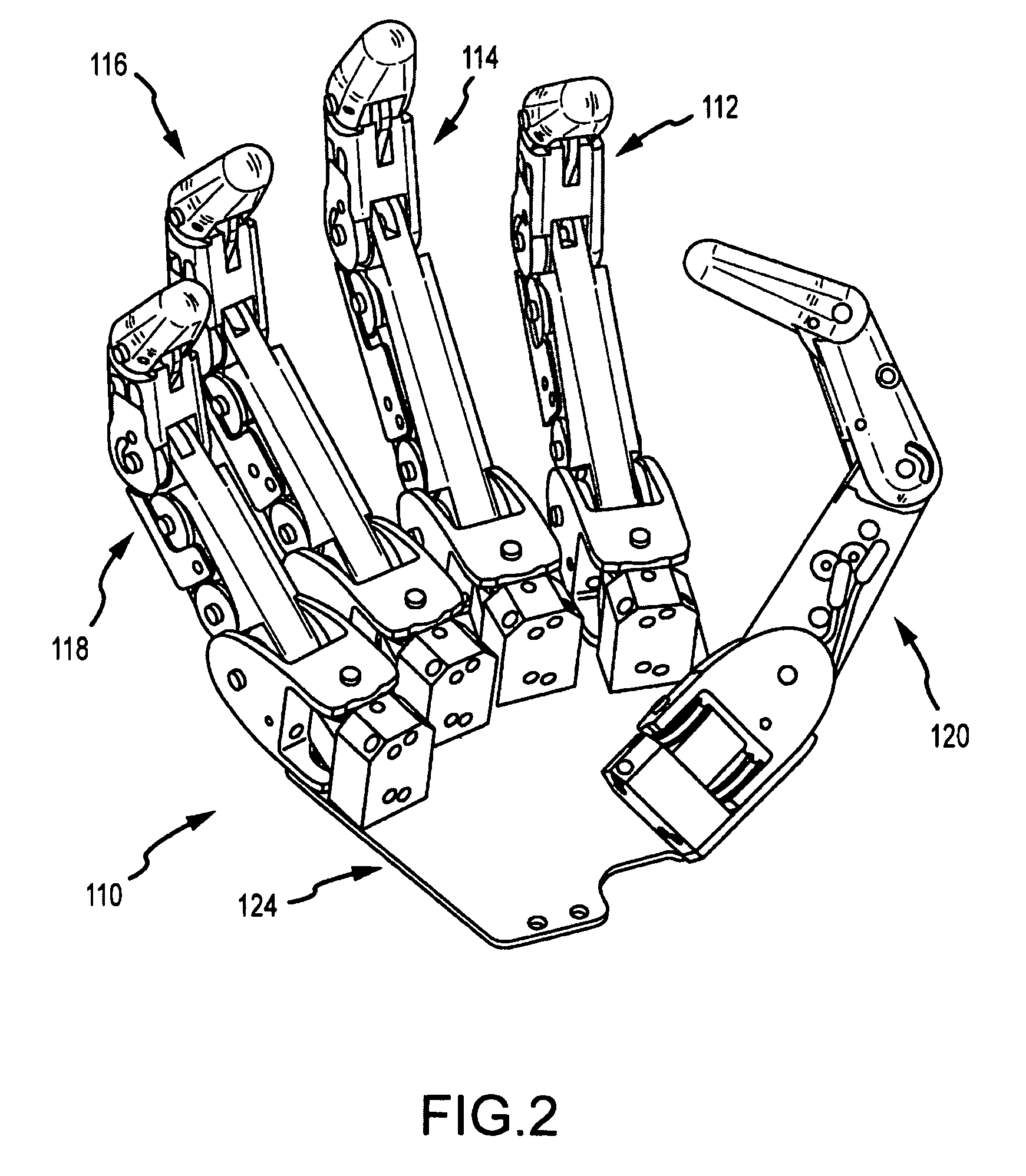Robot hand with humanoid fingers
a humanoid, hand-held technology, applied in the field of robot hands, can solve the problems of increased cost, increased hardware, and additional motors, and achieve the effect of reducing tendon or cable friction
- Summary
- Abstract
- Description
- Claims
- Application Information
AI Technical Summary
Benefits of technology
Problems solved by technology
Method used
Image
Examples
Embodiment Construction
[0029]Briefly, embodiments of the present invention are directed to robotic hand systems that address the longstanding demand to have improved performance with enhanced simulation of a human hand and human fingers. Prior robotic hands either had less joints and digits / segments than found in a human finger (i.e., three segments or digits) or were sized and / or designed such that the fingers, palm, wrist, or other portions would not fit or suit within human form factors. The robotic hand systems described herein provide a hand or hand assembly with fifteen degrees of freedom (DOF) (e.g., three DOF per finger) such that the hand and each finger can create a wide variety of gestures while still fitting within a human form factor. In each finger or finger assembly, a combination of tension elements (e.g., tendons or drive cables that may take the form of flexible steel cables or wires / wire ropes), linkages, and pulleys to actuate four joints per finger, which provides three DOF per finger...
PUM
 Login to view more
Login to view more Abstract
Description
Claims
Application Information
 Login to view more
Login to view more - R&D Engineer
- R&D Manager
- IP Professional
- Industry Leading Data Capabilities
- Powerful AI technology
- Patent DNA Extraction
Browse by: Latest US Patents, China's latest patents, Technical Efficacy Thesaurus, Application Domain, Technology Topic.
© 2024 PatSnap. All rights reserved.Legal|Privacy policy|Modern Slavery Act Transparency Statement|Sitemap



